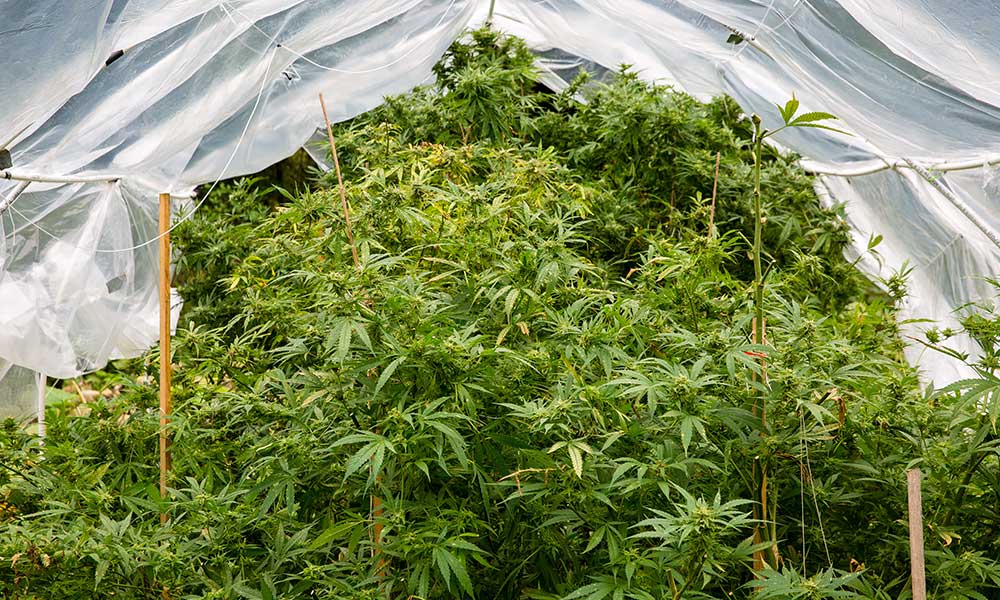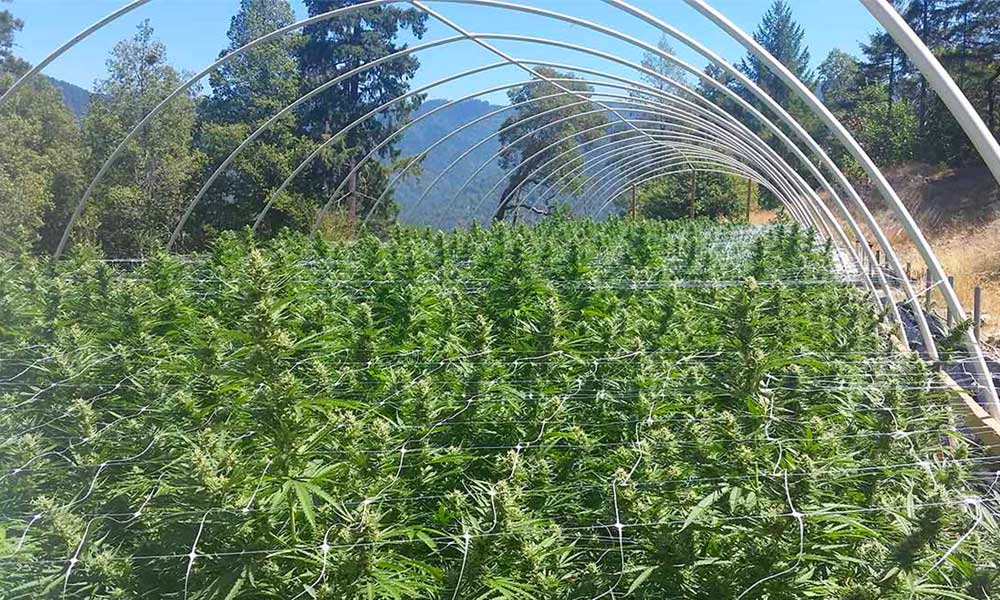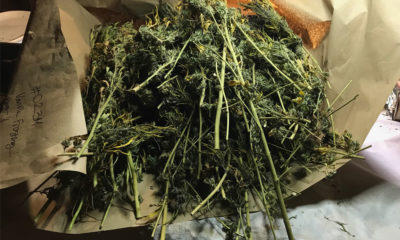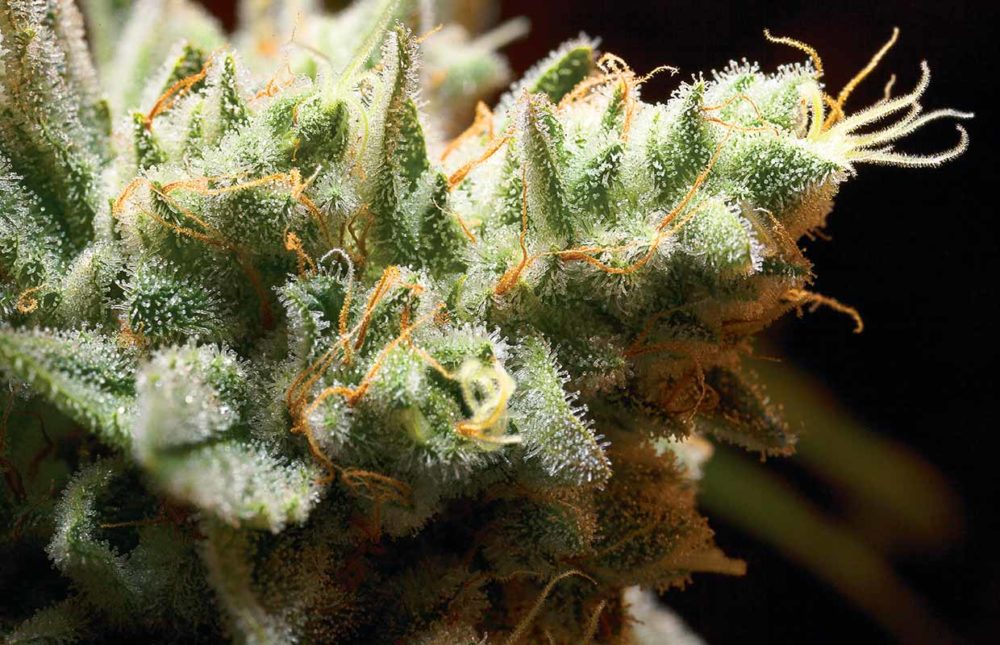
Cannabis
California’s Persisting Cannabis Dystopia Part 2
Here in part 2 of our exploration into Northern California’s ever-increasing problematic cannabis-related issues, reporter Bill Weinberg digs deep to raise important questions.
In Northern California’s Trinity County—inland from Humboldt and more rugged—a recent brutal police raid on cannabis farmers at a local homestead provides an all too vivid example of what the stakes are when the legal sector fails small operators.
Racist Raids in Trinity County?
On May 2, Trinity sheriff’s deputies executed a search warrant in the Trinity Pines community near the town of Hayfork. The Sheriff’s Office said over 16,000 plants were seized in the operation, along with 7,500 pounds of processed marijuana and various firearms. But at the homestead of grower Nhia Yang, deputies fatally shot the family’s dog—almost immediately upon showing up at the gate and as Yang’s hands were in the air. Video of the shooting went viral online, and the incident won coverage from the Los Angeles Times.
According to a statement from the Sheriff’s Office, “Yang was arrested for illegal marijuana cultivation, possession of marijuana for sale and resisting arrest.”
The statement also said “Trinity County Environmental Inspectors removed several containers of illegal pesticides from nearly all of the sites visited”—without making clear if this included Yang’s.
Some Trinity county residents are calling for Sheriff Tim Saxon to resign over the incident. The bitterest irony is that the cannabis at the property was being grown under state license. Yang, the family patriarch, was the property owner and father of the license holder.
The homestead had previously had a county permit, but this wasn’t renewed due to a lawsuit brought by a local citizen’s group that has aggressively taken on cannabis cultivation in the county, the Trinity Action Association (TAA).
The County and TAA reached a settlement in the suit in August 2019, under which the validity of local permits was suspended until a site-specific review for each one was conducted in conformity with CEQA. This is despite the fact that the 2017 MAUCRSA allowed a window of until 2021 before CEQA hit in for California growers.
In 2021, the TAA went back to court, charging that the county violated the settlement agreement by issuing provisional licenses. That September, a state judge in Redding (the nearest city in neighboring Shasta County) ruled for the TAA, putting all new permits and renewals on hold. The county started issuing new licenses with CEQA review starting in the spring of 2022, but by then, there was a backlog some 400 deep that still hasn’t been cleared out.
Lisa Wright is chief executive at Flowra, a firm based in Trinity’s county seat of Weaverville that helps growers with permitting and licensing. She is outraged at the brutal raid at the Yang homestead. “I guess Trinity County has re-criminalized cannabis cultivation for licensed growers,” she says.
Wright says structures at the homestead were damaged in the raid and that no interpreter was brought in—despite the fact that Yang, a member of the Hmong ethnic group from Laos, speaks limited English.
“When did we leave the USA?” Wright asks rhetorically. “When did Trinity County secede? I think we’re still innocent until proven guilty here—yet they destroy someone’s property and bury the evidence and terrorize this man who barely speaks English.”
She also perceives a racist and xenophobic element in the county crackdown, which has seen increasing numbers of raids over the past years. “There’s a growing immigrant population involved in cannabis cultivation here—East European and Hmong. They’ve been targeted in the raids, roughed up, thrown to the ground, told to go back where they come from.”
She notes with alarm that under a multi-county task force, deputies from Siskiyou County have been brought in for the raids—including that at the Yang homestead. Siskiyou, bordering Trinity on the north, has a large Hmong community—and has seen protests in usually sleepy county seat Yreka in recent years over charges of ethnically targeted enforcement.
The Trinity Pines area has a large concentration of Hmong growers and Wright finds it disconcerting that Siskiyou deputies are participating in raids there.
Trinity, like Humboldt, enacted a county ordinance allowing commercial cultivation permits way back in 2016 before Proposition 64 even passed. But now, the pro-cannabis forces appear to be in retreat before a backlash. Since the November 2022 elections, two seats out of the five on the Board of Supervisors are held by TAA-backed candidates—including Jill Cox, chair of the board.
And Wright sees their influence as indicative of a flaw in the state’s cannabis law. “Prop 64 gave too much control to local jurisdictions,” she says.

Seeking Consensus Solutions
Ross Gordon of the HCGA is also policy chair of the Origins Council, the statewide advocacy organization for legacy growers. In that capacity, he’s working to promote policy solutions for “small cannabis farmers using regenerative practices.”
One is a bill currently pending in Sacramento, AB 1111, that would allow farmers to sell directly to consumers on a green market model. Another is the Small & Homestead Independent Producers (SHIP) Act which would allow growers to ship directly to consumers in any state where it’s legal on a wine-club model—contingent on federal legalization.
The OC is working with the newly formed National Craft Cannabis Coalition to prepare for this eventuality. “Whatever federal legalization looks like, it has to include provisions for the small farmer,” Gordon says. He again points to the “tremendous division between new large-scale cultivators in Central and Southern California, and the Emerald Triangle, where you still have predominantly small farmers.”
There are some 1,500 licensed cannabis farmers in the three counties of the Triangle, Gordon says. Yet just one outfit in Ventura County, Glass House Brands, has 5.5 million square feet, or 126 acres—not even counting a secondary facility in Santa Barbara. “By contrast, all permitted cannabis in Mendocino County combined is 110 acres, distributed over 475 independent farms,” Gordon notes.
The OC’s Coleman sees other ways in which California’s cannabis law is putting small growers at a disadvantage. Under MAUCRSA, the cannabis industry is categorized under “Business & Professions” rather than “Agriculture,” with the relevant provisions of the state code applying on that basis. This means that carve-outs in some laws and regulations for agriculture under California’s Right-to-Farm Law don’t apply to cannabis.
“Farming can be stinky,” Coleman says. “The RTF Law limits nuisance complaints for farms. But the ‘Business & Professions’ classification gets around that. There’s more opportunities for control. We’re still operating under an iteration of prohibition.”
Gordon emphasizes that what’s at stake in the Emerald Triangle is survival not only of an economic sector but of what has become a traditional way of life.
“We still have more small independent cannabis farms than you find in any other region in the US,” he says. “It’s a really strong part of our culture.”
Miss part one? Read it here.



















